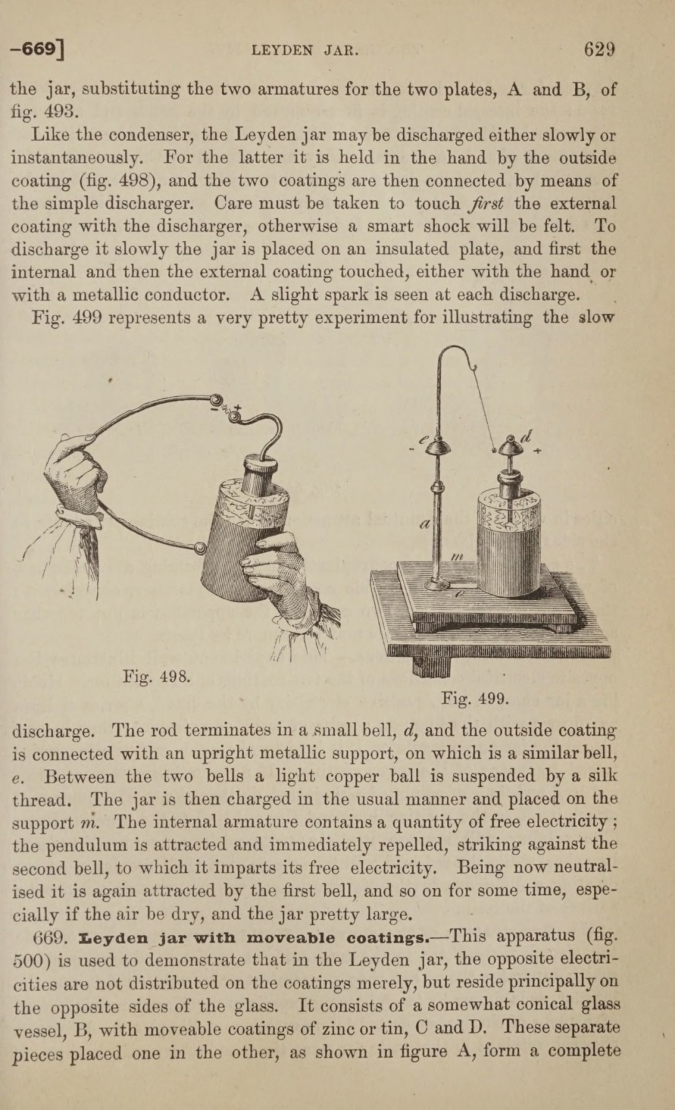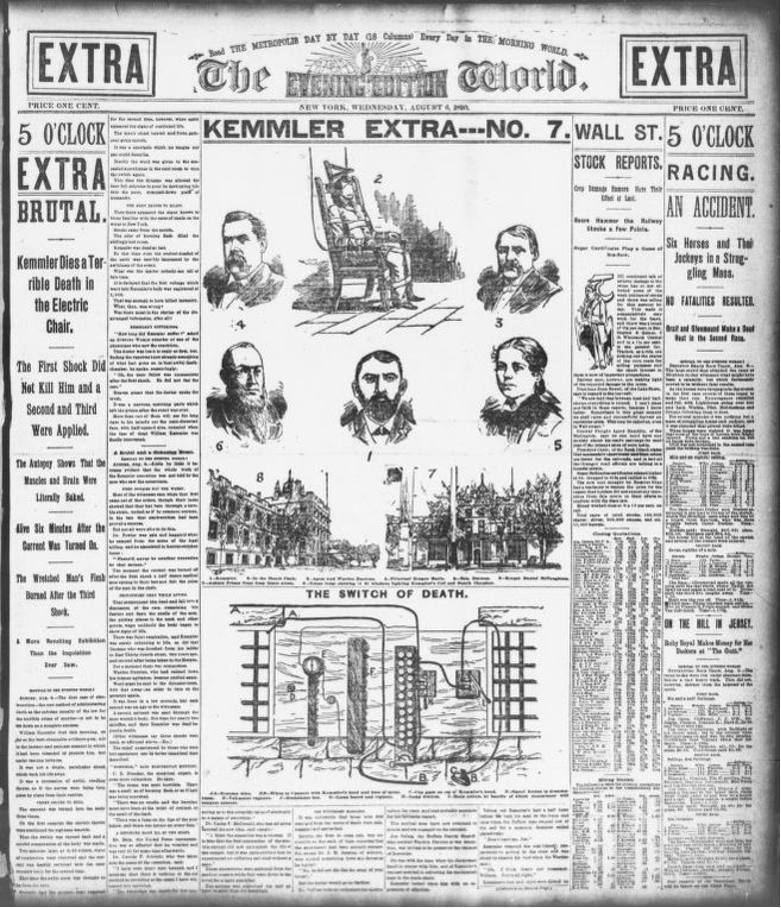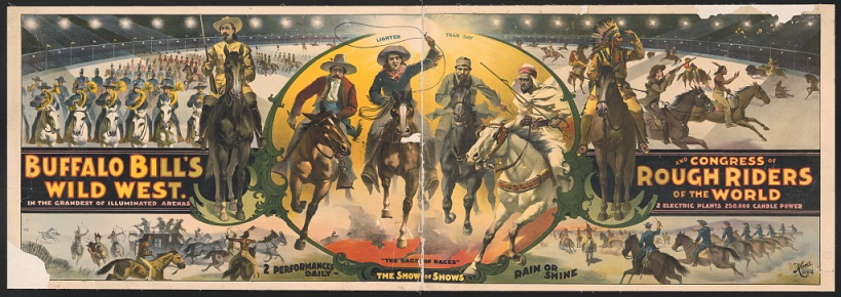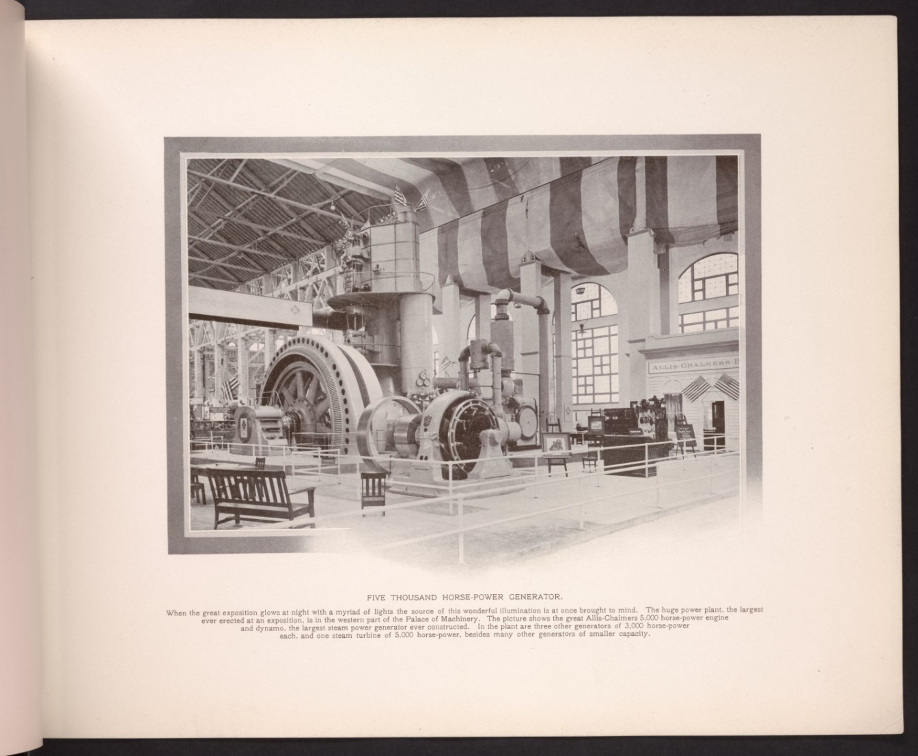Karen Garvin
The modern world runs on electricity. From lighting and heat, to computers and cell phones, almost all technology relies on a steady supply of electrical current for power. Yet despite people being aware of electricity for more than two millennia it has only been within the last 200 years that the study of electricity was formalized, leading to the development of a complete system of electrical power distribution and the invention of numerous electrically powered appliances and machines.
The Greek philosopher Thales of Miletus (circa 626–623 BCE) was one of the first to investigate the phenomenon of electricity. He observed that rubbing a lump of amber with fabric would cause small objects, such as feathers, to cling to it.[1] There was little progress in understanding this strange effect until the English physician and philosopher William Gilbert (1544–1603) began experimenting with various materials to see whether they were magnetic or displayed an electric effect, which he thought was due to “electrical effluvia” that behaved much like flowing water.[2]
Gilbert’s legacy of experimentation was taken up by other natural philosophers, and gradually there emerged a small body of knowledge about electricity. The English dyer and astronomer Stephen Gray (1666–1736) worked out how to transmit electricity over a distance but was hampered by the small amounts of electricity he could generate, and so his efforts led nowhere.[3]
There was no way to store electricity until the Leyden jar was developed in the mid-eighteenth century. It was independently discovered by the German cleric Ewald Georg von Kleist (1700–1748) and Dutch mathematician Pieter van Musschenbroek (1692–1761), who generally gets the credit for the invention.[4] This device was a glass jar partially coated with a thin metal foil on both the inside and outside. A metal rod was inserted through the jar’s cork, making contact with both the inner and outer foil plates.[5] The Leyden jar was capable of delivering a very high voltage of around 10,000 volts (fig. 1).[6]
Figure 1. Illustrations of a Leyden jar being discharged. One method produces a quick discharge (and possible shock to the user), while the second method produces a slow trickle of current. From Adolphe Ganot and Edmund Atkinson, Elementary Treatise on Physics, Experimental and Applied (New York: W. Wood and Co., 1868). Public domain; book held by the Library of Congress, https://www.loc.gov/item/17008559/.
In 1800, Alessandro Volta (1745–1827) developed the first chemical storage battery, called a “pile,” which consisted of a stack of alternating copper and zinc discs separated by pasteboard.[7] Instead of delivering a high-voltage spark like a Leyden jar, the battery produced a steady electrical current.[8] The English scientists William Nicholson (1753–1815) and Anthony Carlisle (1768–1840) used electricity to separate chemical compounds into elements; this process was named electrolysis and it soon led to other discoveries, including electroplating.[9]
Sir Humphrey Davy (1778–1829) also experimented with electrolysis, building a large battery that he used for the process. Davy also experimented with lighting. In 1801 he demonstrated incandescent lighting, using his battery to heat platinum strips until they glowed. Perhaps Davy’s most impressive electrical work was the construction of an arc lamp, which consisted of two carbon rods placed close together but not touching; when electrical current was sent through the rods a spark jumped the gap and gave off a brilliant white light. Sometime between 1802 and 1809, Davy demonstrated the arc light at the Royal Society in London but otherwise did nothing to put the arc lamp to productive use.[10]
Electrical lighting remained impractical until sufficiently powerful electrical generators were developed. During the mid-nineteenth century, most power stations were isolated affairs, with customers building and using their own power sources.[11] The expense of building generators meant that electricity was reserved for large projects, such as lighthouses, or homes of the rich, such as financier J. P. Morgan.[12] A few central power stations existed and by the late 1870s they were providing power for arc street lights in major American and European cities, including New York, London, and Paris.[13]
Arc lamps produced a strong white light that provided ample lighting for streets and cities, and they were increasingly used to replace gas lighting. Early arc lamps were fraught with problems: they tended to flicker, and they produced a harsh light that distorted colors and gave off an annoying hum that rendered them unsuitable for indoor use.[14] Russian military engineer Pavel (Paul) Jablochkoff (1847–1894) developed a commercial version of an arc lamp that produced a milder light, which became known as the Jablochkoff candle.[15]
Inventors such as J. W. Starr (1822–1846) and Heinrich Goebel (1818–1893) turned their attentions to incandescent lighting for indoor use, with Goebel producing a successful vacuum incandescent lamp two decades before Thomas Edison (1847–1931).[16] Alexander de Lodyguine (1847–1923) of Russia created a nitrogen-filled bulb and used them to light St. Petersburg harbor. Joseph Swan (1828–1914) of England began experimenting with carbon filaments for incandescent bulbs and become one of the first commercially successful electrical inventors after he patented his incandescent light bulb in 1880.[17]
By the late 1870s, Edison began experimenting with arc and incandescent bulbs (fig. 2). Sensing the possibility of a commercial market for a more pleasing light, he looked to create safe lighting that included long-lasting bulbs and an inexpensive power source. Edison’s concept was not just to make one component, but to create an entire electrical utility system. By 1879 he had a successful light bulb and for the next two years focused on installing a lighting system at his Menlo Park laboratory in New Jersey. In 1882 Edison opened London’s Holborn Viaduct electrical station and then turned his attention on New York City.[18]
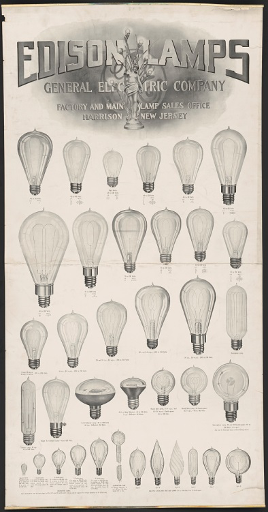 Figure 2. This 1903 advertising poster from the General Electric Company shows the wide variety of Edison-style electric bulbs (lamps) that were available by the turn of the 20th century. “Edison Lamps,” General Electric Company, factory and main lamp sales office, Harrison, New Jersey, 1903. No known restrictions on publication; poster held by the Library of Congress, https://www.loc.gov/item/2018694401/.
Figure 2. This 1903 advertising poster from the General Electric Company shows the wide variety of Edison-style electric bulbs (lamps) that were available by the turn of the 20th century. “Edison Lamps,” General Electric Company, factory and main lamp sales office, Harrison, New Jersey, 1903. No known restrictions on publication; poster held by the Library of Congress, https://www.loc.gov/item/2018694401/.
After purchasing a large building in Manhattan, Edison sought and received permission from the city to dig up the streets in order to lay electrical conduits for his central power station. At the heart of the Pearl Street Power Station were six 27-ton, coal-fueled electrical generators, each capable of producing 100 kilowatts of power. The generators produced an alternating current (AC) that was converted into a safe, low-voltage direct current (DC). The plant went into operation on September 4, 1882. It originally provided service for 85 customers, and within a year the number of customers had increased to 500.[19]
There had been an international lighting system for some time, with companies such as the Société Générale d’Électricté in France, which, after installing lighting systems in Paris, Le Havre, and London, established a Russian subsidiary.[20] By the early 1880s, lighting systems existed in many parts of Europe as well as Asia and South America. But it was Edison’s much-publicized success with Pearl Street that helped fuel the further demand for electrical utility systems.[21]
By the late 1800s, two competing electrical transmission systems were in place: AC and DC. Proponents of DC, including Edison, argued that the low voltages required by DC systems made them safer than AC systems, which used very high voltages to distribute power. A number of people had been killed after coming into contact with AC power lines and there was widespread belief that power companies had little interest in public safety.[22]
Nikola Tesla (1856–1943) and George Westinghouse (1846–1914) were proponents of AC, as were many European companies.[23] One solid argument in favor of AC was that it was more efficient at transmitting power over long distances than DC. It also was more versatile because DC systems required separate supply lines for lights and motors, which required different voltages to operate properly. By contrast, a single AC power line could be used with transformers to provide a range of voltages for different electrical equipment.
The ensuing “War of the Currents” evolved into an ugly rivalry over what form the national power distribution system should take. Edison, who had a large monetary stake in his existing DC power systems, attempted to prove how dangerous AC was by electrocuting animals. On August 6, 1890, the dangers of AC were made abundantly clear when convicted murderer William Kemmler (1860–1890) was electrocuted to death in the first electric chair (fig. 3).[24] In turn, Westinghouse and Tesla denounced Edison’s system, noting its limitations and promoting their own AC system.
Figure 3. The execution of convicted murderer William Kemmler by electrocution made front-page news. It was the first use of the electric chair, which was powered by alternating current. The Evening World (New York), August 6, 1890. Public domain; newspaper image is from the Library of Congress, https://www.loc.gov/item/sn83030193/1890-08-06/ed-6/.
William Stanley Jr. (1858–1916) produced the first commercially successful AC transformer, which was based on earlier designs. Stanley made changes to improve the efficiency of transformers, which he incorporated into a working high-voltage AC power system in Great Barrington, Massachusetts. On March 20, 1886, Stanley successfully electrified the town using a 500-volt generator to provide power. The “Great Barrington Electrification” relied on Stanley’s transformers, which stepped up the generator’s output to 3,000 volts for transmission and then safely stepped it back down to 500 volts again at the destination. The success of the installation proved that an AC system could safely provide electricity for a large number of customers.[25] Stanley’s success was another early win for AC in the War of the Currents.
Alternating current was showing itself to be better suited for electrical distribution: in 1891, Electrical World magazine reported about 200 Edison DC power stations in use nationwide, whereas there were about 1,000 AC power stations in operation.[26] Another win for alternating current was the 1893 Chicago World’s Fair (also known as the World’s Columbian Exposition). The fair’s organizers took bids for lighting the fairgrounds, which sprawled over 600 acres. They awarded the contract for electrifying the fair to George Westinghouse, who was able to underbid the rival company, General Electric, because his cost-effective AC system required less wiring than the competing DC system.[27] Westinghouse’s system relied on Tesla’s polyphase generator, which could hand high voltages and heavy loads, making it ideal for large-scale applications.
The exposition included a two-story Electricity Pavilion that showcased electrical inventions; the second floor had a display for domestic products, while the main floor showcased companies and inventors, including Edison, Tesla, and Westinghouse, as well as a number of European companies. Many technical breakthroughs were on display at the fair, such as the first fluorescent light bulbs. Tesla gave demonstrations using high voltages to show that it could be used safely; Edison displayed his phonograph; a German company, Allegemeine Elektrizitats Gesellschaft, brought alternating current equipment.[28]
Lighting was not the only use for electricity. Small, yet powerful, electric motors were developed in order to replace steam power for city trams, although it took years to develop a reliable battery. In 1879, the German firm of Siemens & Halske unveiled a narrow-gauge electric train at the Berlin Industrial Exhibition, and in 1881 the company constructed an experimental tram line that used the train’s rails as an external power source. Electrified rails were a shock hazard, though, and later tram lines used an overhead power source. Subway systems and railways also increasing used electric motors for propulsion.[29]
With powerful electrical generators to make electricity and a capable delivery system came an increased demand for electric power. Lighting and transportation were important uses for electricity, but new inventions arrived quickly, including domestic appliances such as the electric bread toaster, which was created in 1893 by Scottish inventor Alan MacMasters.[30] In 1889, Singer introduced the first electric sewing machine.[31]
The new electrical utility industry was unlike any other industry. Electricity could not be easily stored and so it needed to be used as soon as it was generated. The equipment required constant upkeep by skilled technicians, and the industry required huge outlays of capital.[32] For this reason, dense urban areas were the first to be electrified because it was unfeasible and uneconomical for individual companies to run miles of transmission lines to rural areas. The increasingly widespread availability of electricity in cities also meant that modern electrical conveniences, including the toaster, were first adopted in the highly populated urban centers. Due to the high costs of building transmission lines, electricity remained a utility primarily for the cities for the remainder of the nineteenth century, although there were exceptions. (fig. 4).[33]
Figure 4. This action-packed poster for Buffalo Bill’s Wild West show boasts that its two electric plants can produce illumination that is “lighter than day.” Buffalo Bill’s Wild West and Congress of Rough Riders of the World in the Grandest of Illuminated Arenas, 2 Electric Plants, 250,000 Candle Power (New York: Springer Litho. Co., 1895). No known restrictions on publication; poster held by the Library of Congress, https://www.loc.gov/item/2002719218/.
In 1881, Edison employed Samuel Insull (1859–1938) as his secretary. Insull, who emigrated from England to work with Edison, was given the task of handling finances and helping to reduce Edison’s chronic money shortage.[34] Insull was adept at the electricity business and proved to be instrumental in creating the modern electric power grid. By consolidating small electricity providers into larger companies, he was able to leverage the economies of scale, which in turn helped to bring the price of electricity down so that it was no longer a luxury item. With more consumer demand, Insull also expanded electrical utilities out into rural areas, although much of the United States was not electrified until after 1930 (fig. 5).[35]
Figure 5: The Allis-Chalmers five-thousand horsepower electrical generator that was on display in the Palace of Machinery at the 1904 Louisiana Purchase Exposition. Official Photographic Company, and Louisiana Purchase Exposition, The World’s Fair in Colortypes and Monotones: Official Publication (St. Louis: Official Photographic Co, 1904). Public domain; book held by the Library of Congress, https://www.loc.gov/item/89101355/.
[1]. Jill Jonnes, Empires of Light (New York: Random House, 2003), 17.
[2]. Jonnes, Empires of Light, 18–19.
[3]. Jonnes, Empires of Light, 21–22,
[4]. “E. Georg von Kleist,” Britannica.com, https://www.britannica.com/biography/E-Georg-von-Kleist; and “Pieter van Musschenbroek,” Britannica.com, https://www.britannica.com/biography/Pieter-van-Musschenbroek.
[5]. Jonnes, Empires of Light, 23–26.
[6]. Michael Littman, “Leyden Jar,” Joseph Henry Project, Princeton University, https://commons.princeton.edu/josephhenry/leyden-jar/.
[7]. Ernest Freeburg, The Age of Edison: Electric Light and the Invention of Modern America (New York: Penguin, 2013), 15; Jonnes, Empires of Light, 31–32.
[8]. Jonnes, Empires of Light, 33.
[9]. William J. Hausman, Peter Hertner, and Mira Wilkins, Global Electrification: Multinational Enterprise and International Finance in the History of Light and Power, 1878–2007 (Cambridge: Cambridge University Press, 2008), 8.
[10]. Freeberg, The Age of Edison, 15–17; Hausman, Global Electrification, 8.
[11]. Hausman, Global Electrification, 9.
[12]. Freeberg, The Age of Edison, 17; Hausman, Global Electrification, 9; Jonnes, Empires of Light, 13.
[13]. Hausman, Global Electrification, 9.
[14]. Freeberg, The Age of Edison, 18, 28; Hausman, Global Electrification, 11.
[15]. Jonnes, Empires of Light, 45.
[16]. Freeberg, The Age of Edison, 28–29; Hausman, Global Electrification, 11.
[17]. Hausman, Global Electrification, 11; “Edison’s Incandescent Lamp,” Engineering and Technology History Wiki, August 25, 2020.
[18]. Hausman, Global Electrification, 321n37; Jonnes, Empires of Light, 81.
[19]. Carl Sulzberger, “Thomas Edison’s 1882 Pearl Street Generating Station,” Engineering and Technology History Wiki, November 23, 2017; and Carl Sulzberger, “Milestones: Pearl Street Station, 1882,” Engineering and Technology History Wiki, January 27, 2016.
[20]. Hausman, Global Electrification, 75.
[21]. Hausman, Global Electrification, 75–76.
[22]. Freeburg, The Age of Edison, 181.
[23]. “Initial Tesla Polyphase/‘Three-Phase’ Alternating-Current Systems and Metering Development,” Engineering and Technology History Wiki, July 10, 2015.
[24]. Jonnes, Empires of Light, 185–213.
[25]. Jonnes, Empires of Light, 133.
[26]. Jonnes, Empires of Light, 287.
[27]. Jonnes, Empires of Light, 248–56.
[28]. Richard Munsen, Tesla: Inventor of the Modern (New York: W.W. Norton, 2018), 108–10; and “Electrical Building,” Chicagology.com, https://chicagology.com/columbiaexpo/fair033/.
[29]. Hausman, Global Electrification, 15–17.
[30]. Linda Gross, “The History of Making Toast,” Hagley Museum, June 19, 2017, https://www.hagley.org/librarynews/history-making-toast.
[31]. “History,” Singer, https://www.singer.com/history.
[32]. “History of Electricity: Enter Samuel Insull,” Institute for Energy Research, https://www.instituteforenergyresearch.org/history-electricity/#Rise; and Hausman, Global Electrification, 19.
[33]. Harold D. Wallace Jr., “Power from the People: Rural Electrification Brought More than Lights,” National Museum of American History, Behring Center, February 12, 2016, https://americanhistory.si.edu/blog/rural-electrification.
[34]. John F. Wasik, The Merchant of Power: Sam Insull, Thomas Edison, and the Creation of the Modern Metropolis (New York: St. Martin’s Press, 2006), 5–14.
[35]. “History of Electricity: Insull Builds the Modern Power Grid,” Institute for Energy Research, https://www.instituteforenergyresearch.org/history-electricity/#Insull; and Wallace, “Power from the People.”
Further Reading:
“Initial Tesla Polyphase/‘Three-Phase’ Alternating-Current Systems and Metering Development,” Engineering and Technology History Wiki, July 10, 2015.
Freeburg, Ernest. The Age of Edison: Electric Light and the Invention of Modern America. New York: Penguin, 2013.
Hausman, William J., Peter Hertner, and Mira Wilkins. Global Electrification: Multinational Enterprise and International Finance in the History of Light and Power, 1878–2007. Cambridge: Cambridge University Press, 2008.
Heilbron, J. L. Electricity in the 17th and 18 Centuries: A Study of Early Modern Physics. Berkeley: University of California Press, 1979.
Hughes, Thomas P. (1993). Networks of Power: Electrification in Western Society, 1880–1930. Baltimore: Johns Hopkins University Press, 1993.
Institute for Energy Research. “History of Electricity.” https://www.instituteforenergyresearch.org/history-electricity/#RevolutionaryPower.
Jonnes, Jill. Empires of Light: Edison, Tesla, Westinghouse, and the Race to Electrify the World. New York: Random House, 2004.
Klein, Maury. The Power Makers: Steam, Electricity, and the Men Who Invented Modern America. New York: Bloomsbury Press, 2008.
Munson, Richard. Tesla: Inventor of the Modern. New York: W.W. Norton, 2018.
McNichol, Tom. AC/DC: The Savage Tale of the First Standards War. San Francisco: Wiley, 2006.
Nelles, H. V. Politics of Development: Forests, Mines & Hydro-Electric Power in Ontario, 1849–1941. Montreal: McGill-Queen’s University Press, 2005.
Smithsonian Institution, “Joseph Henry’s Yale Magnet,” https://siarchives.si.edu/collections/siris_sic_13160.
Skrabec, Quentin R. George Westinghouse: Gentle Genius. New York: Algora Publishing, 2007.
Stross, Randall. The Wizard of Menlo Park: How Thomas Alva Edison Invented the Modern World. New York: Three Rivers Press, 2007.
Wasik, John F. The Merchant of Power: Sam Insull, Thomas Edison, and the Creation of the Modern Metropolis. New York: St. Martin’s Press, 2006.

